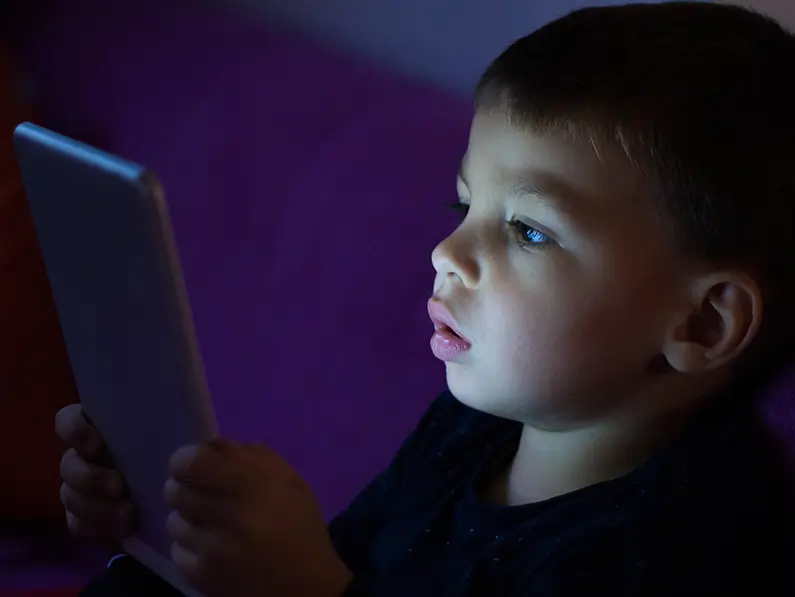In recent times, kids interact with screens more than ever. While digital devices empower learning and fun, they can also strain young eyes if not managed properly. This blog dives into the impact of excessive screen time on children’s vision and offers practical strategies to help parents protect their child’s eye health. Whether you’re curious about blue light effects, screen time guidelines, or ways to relieve digital eye strain, you’ll find expert-backed advice and actionable tips here.
Understanding Screen Time and Its Impact on Children’s Vision
The Rise of Screen Time in Children’s Daily Lives
Digital devices have seamlessly woven into the fabric of everyday life. From online classes and virtual playdates to gaming and streaming services, screens are ubiquitous in a child’s routine. With this increase, concerns about potential eye strain and long-term vision issues have grown. Research shows that children often have a cumulative screen exposure that raises the risk of developing digital eye strain, a condition that can lead to discomfort and decreased concentration over time.
How Screens Affect Developing Eyes
Children’s eyes are in a crucial phase of development, and the visual system adapts rapidly during these early years. When young eyes focus on screens for long periods, the constant close-up work forces the eyes to maintain focus in an unnatural way. This intense focusing can lead to symptoms such as dry eyes, headaches, and blurred vision. The complex interaction between light exposure and eye muscle fatigue might even contribute to long-term conditions like myopia. Keeping a balanced visual environment is essential to mitigate these risks.
How Blue Light Affects Children’s Eyes
What is Blue Light?
Blue light is part of the visible light spectrum and has a high energy level compared to other wavelengths. Naturally present in sunlight, blue light helps regulate our sleep-wake cycles. However, the artificial blue light emitted from digital screens is continuous and more concentrated, which can overwhelm young eyes that are not yet fully equipped with protective filtering mechanisms.
Effects of Blue Light on Children’s Vision
Excessive blue light exposure can have several impacts on children’s vision:
- Digital Eye Strain: Over time, the intense blue light leads to eye fatigue, dryness, and headaches.
- Sleep Disruption: Blue light interferes with melatonin production, which is vital for a healthy sleep pattern.
- Potential Long-Term Damage: There is growing evidence suggesting that chronic exposure might contribute to long-term vision problems, especially in children whose eyes are still maturing.
Recommended Daily Screen Time by Age
Healthcare professionals agree that screen time should be tailored to a child’s age and developmental needs. Here’s a breakdown of recommended limits to ensure optimal eye health:
Infants (0-2 Years)
– Guideline: Minimize screen exposure to only video chats or very brief, purposeful encounters. The focus should be on real-world interactions that foster sensory and cognitive skills.
Preschoolers (2-5 Years)
– Guideline: Limit screen time to about one hour per day of high-quality programming. Co-viewing is encouraged to enhance learning and mitigate passive screen use.
School-Aged Children (6-12 Years)
– Guideline: Try to restrict recreational screen time to one to two hours daily. Balancing digital time with academic and outdoor activities is crucial for healthy development.
Teenagers (13-18 Years)
– Guideline: Aim for no more than two hours of recreational screen time per day. Considering the academic demands and social interactions, establish structured breaks and digital detox periods to minimize strain.
Eye Exercises to Reduce Digital Eye Strain
Simple yet effective techniques can help ease the discomfort associated with prolonged screen use. Adding these exercises into a daily routine can significantly reduce digital eye strain.
The 20-20-20 Rule
The 20-20-20 rule advises that every 20 minutes, a break should be taken by looking at an object 20 feet away for at least 20 seconds. This quick respite allows the eye muscles to relax and refocus, much like a brief pause during a marathon helps a runner recover.
Simple Eye Exercises for Kids
Incorporating fun and interactive eye exercises can make a big difference:
- Blinking: Teach your child to blink intentionally several times to ensure their eyes remain adequately lubricated.
- Palming: Encourage them to gently rub their hands together, then cup them over their closed eyes to create a soothing, warm cover that relaxes the eye muscles.
- Eye Rolling: Have your child practice slow, deliberate eye rolls, which can help stretch and relax the small muscles around the eyes.
Best Glasses and Protective Filters for Kids
For children who regularly use digital devices, protective eyewear and screen filters can be an added layer of defense. These devices help filter out harmful blue light and reduce glare, making screen time more comfortable and less taxing on their eyes.
Blue Light Blocking Glasses
Blue light blocking glasses are designed to filter out a significant portion of blue light. By reducing the amount of harmful light that reaches the eyes, these glasses lessen the risk of digital eye strain and can make digital tasks more comfortable—especially in low-light situations.
Screen Filters and Device Settings
Modern devices often come equipped with built-in features such as “night mode” or blue light filters. Adjusting your child’s device settings to reduce screen brightness and shifting the color temperature during the evening can provide additional protection to their eyes. These adjustments are akin to dimming the lights in a theater to enhance the overall viewing experience without causing eye strain.
Warning Signs of Vision Problems in Children
Early detection of vision problems can prevent more serious issues later on. Parents should be vigilant for both physical and behavioral signs that might indicate that a child’s eyes are under strain.
Physical Symptoms
- Squinting or excessive blinking.
- Frequent rubbing or touching of the eyes.
- Recurring headaches or noticeable eye fatigue.
- Difficulty focusing on objects, whether up-close or at a distance.
Behavioral Indicators
- Reduced interest in visually engaging activities such as reading or playing sports.
- Irritability or lethargy after long periods of screen use.
- A tendency to avoid or be reluctant about using digital devices.
Tips for Parents to Manage Screen Time
Keeping digital exposure balanced with other essential activities is key to protecting your child’s eyes. Here are practical tips to manage screen time effectively:
Setting Screen Time Limits
Create a daily schedule that clearly defines when screen time is allowed. Utilize parental controls and timer settings to help enforce these limits. This structure not only protects their eyes but also teaches valuable time management skills.
Encouraging Outdoor Activities
Outdoor play offers natural light, which is beneficial for eye health, and provides a healthy break from screens. Activities like playing in the park, biking, or simply exploring nature give children an opportunity to engage their eyes in a more natural setting. Think of it as giving their eyes a refreshing reset after focused digital tasks.
Creating Tech-Free Zones
Establish areas in your home where screens are not allowed, such as bedrooms and dining areas. Tech-free zones foster more engaging conversations and promote uninterrupted family time, while also reducing the cumulative screen exposure throughout the day.
Conclusion
Balancing the benefits of digital interaction with the risks of prolonged screen time is essential for protecting your child’s eye health. By adhering to age-appropriate screen time guidelines, incorporating simple exercises, and utilizing protective tools like blue light filters, parents can help reduce the risks of digital eye strain. Ultimately, combining structured screen time with plenty of outdoor and offline activities provides a well-rounded approach that benefits your child’s overall development and long-term vision health.
FAQ: Your questions answered
How much screen time is safe for my child?
While guidelines differ by age, minimizing screen exposure for infants, limiting preschoolers to one hour, and restricting school-aged kids and teenagers to one to two hours of recreational screen time is generally advisable.
What signs should I watch for to spot digital eye strain in my child?
What signs should I watch for to spot digital eye strain in my child?
Do blue light blocking glasses really help reduce eye strain?
Yes, they filter out a significant portion of harmful blue light, easing digital eye strain and improving overall comfort during device use.
Can you explain the 20-20-20 rule again?
This rule suggests that every 20 minutes, your child should take a 20-second break and look at something 20 feet away to allow the eyes to relax and reduce fatigue.
When should I seek professional advice for my child's vision?
If symptoms like persistent headaches, excessive eye fatigue, or noticeable changes in vision occur, it’s best to consult an eye care professional for a complete evaluation.




